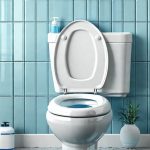Planning for large events is a complex undertaking involving logistics, security, entertainment, and crucially, attendee comfort. Often overlooked in initial planning stages, adequate bathroom facilities are paramount to a positive event experience. Insufficient access can quickly transform an exciting gathering into a frustrating and unpleasant one, leading to long queues, hygiene concerns, and even potential health risks. Beyond mere numbers of toilets, effective bathroom access planning requires considering diverse needs, accessibility requirements, strategic placement, and ongoing maintenance throughout the event duration. A thoughtful approach not only enhances attendee satisfaction but also reflects positively on the event organizers’ professionalism and commitment to inclusivity.
The consequences of neglecting bathroom provisions are significant. Long lines breed dissatisfaction and can disrupt the flow of the event, causing attendees to miss performances or activities. Furthermore, inadequate facilities often lead to unsanitary conditions, raising public health concerns and potentially damaging the event’s reputation. Accessibility for individuals with disabilities is a legal and ethical imperative, and failing to provide appropriate accommodations can result in discrimination claims. Ultimately, prioritizing bathroom access isn’t just about convenience; it’s about creating a welcoming, respectful, and safe environment for all attendees. It’s a foundational element of successful event management that should be addressed proactively from the very beginning of the planning process.
Determining Bathroom Facility Needs
The first step in effective bathroom access planning is accurately determining the required number of facilities. This isn’t simply about estimating attendee numbers; it requires considering several factors. A common rule of thumb suggests one toilet for every 100 attendees, but this can vary wildly depending on event type and duration. – Events with a predominantly male audience may require more urinals. – Family-friendly events should include dedicated family restrooms with baby changing facilities. – Longer events necessitate greater capacity to accommodate ongoing use throughout the day. Beyond basic toilet numbers, consider the inclusion of handwashing stations with soap and water (or sanitizer if water access is limited), adequate lighting for safety, and waste disposal bins.
A more nuanced approach involves categorizing attendees based on demographics and expected behavior. For instance, VIP areas might require higher-end facilities than general admission zones. Attendees consuming significant amounts of liquids (e.g., at a beer festival) will naturally need more frequent access to restrooms. It’s also crucial to factor in the potential for peak demand periods – during headliner performances or meal breaks, for example. Using historical data from similar events can provide valuable insights. If this is a new event type, conducting a thorough risk assessment and consulting with experienced event planners are essential steps. Accurate estimations are critical because underestimating needs leads to long lines while overestimating increases costs unnecessarily.
Finally, don’t forget about staff! Ensure sufficient facilities are available for event personnel – security, vendors, medical staff, etc. – separate from those designated for attendees. This prevents congestion and ensures that those responsible for event operations have convenient access to essential amenities. A comprehensive assessment of these factors will allow organizers to create a realistic plan for bathroom facility provision.
Accessibility Considerations
Providing accessible restrooms is not merely a matter of compliance; it’s about ensuring equal access for all attendees. The Americans with Disabilities Act (ADA) sets clear standards for restroom accessibility, but beyond legal requirements lies the ethical responsibility to create an inclusive event experience. Accessible features include: – Wider doorways and turning radii for wheelchair maneuverability. – Grab bars near toilets and sinks. – Lowered sink heights. – Accessible toilet paper dispensers and soap dispensers. – Lever-handled faucets.
It’s important to note that accessibility isn’t limited to wheelchair users. Individuals with other disabilities, such as visual or hearing impairments, may also require specific accommodations. Signage should be clear, concise, and available in multiple formats (e.g., braille). Consider providing designated accessible parking spaces close to restroom facilities. Furthermore, the placement of accessible restrooms should avoid isolating them from general admission areas – they should be seamlessly integrated into the event layout. A dedicated accessibility coordinator can ensure that all needs are met and provide assistance to attendees who require it.
Often overlooked is the importance of training staff to assist individuals with disabilities effectively. Staff should be aware of the location of accessible facilities, how to operate them, and how to respond respectfully to requests for assistance. This proactive approach demonstrates a commitment to inclusivity and enhances the overall event experience for all participants. Prioritizing accessibility isn’t an added expense; it’s an investment in creating a welcoming and equitable environment.
Strategic Placement & Traffic Flow
The location of bathroom facilities significantly impacts attendee flow and minimizes congestion. Avoid placing restrooms in areas that obstruct walkways or create bottlenecks. Ideally, facilities should be distributed throughout the event site rather than concentrated in one central location. This reduces queue lengths and prevents large crowds from forming in specific areas. Consider positioning restrooms near high-traffic zones such as food vendors, performance stages, and information booths.
Clear and visible signage is essential for directing attendees to restroom locations. Use consistent color coding or icons to differentiate between male, female, family, and accessible restrooms. Signage should be large enough to read from a distance and strategically placed along pathways. Employing a map of the event site with clearly marked restroom locations can further assist attendees in navigating the facilities. It’s also important to consider the flow within the restroom itself – ensure adequate space for queuing without obstructing access points.
Implementing a traffic management plan around restrooms can help mitigate congestion during peak demand periods. This might involve designating separate entry and exit points, utilizing queueing barriers, or employing staff to direct attendees. Regularly monitor queue lengths throughout the event and adjust staffing levels as needed. Furthermore, consider providing portable restroom units in strategic locations to supplement fixed facilities. Effective placement minimizes wait times and enhances attendee experience.
Ongoing Maintenance & Sanitation
Once bathroom facilities are established, ongoing maintenance is crucial for maintaining hygiene and preventing issues during the event. This includes regular cleaning of toilets, sinks, and floors; restocking of toilet paper, soap, and hand towels; and emptying waste bins frequently. Assign dedicated cleaning staff to monitor restroom conditions throughout the event duration. Implement a schedule for routine inspections to identify and address any maintenance needs promptly.
Sanitation is particularly important in crowded events where the risk of germ transmission is higher. Consider providing hand sanitizer stations outside restrooms to encourage attendees to practice good hygiene. Ensure that waste disposal bins are covered and emptied regularly to prevent odors and attract pests. If portable restroom units are used, ensure they are properly maintained and sanitized according to health regulations.
Contingency plans should be in place for addressing unexpected issues such as plumbing problems or blocked toilets. Having a readily available maintenance team can minimize disruption and ensure that facilities remain functional throughout the event. If you’re looking at long-term planning, consider how bathroom design impacts usability for regular events. Proactive maintenance demonstrates attention to detail and enhances attendee comfort. A clean and well-maintained restroom environment is essential for creating a positive impression and ensuring public health.
To further enhance the overall event experience, consider how pre-event planning can minimize attendee stress related to bathroom access. A well-thought-out plan will not only address practical needs but also demonstrate a commitment to attendee wellbeing. Remember that smart planning is key for a smooth event and positive guest experience.
Beyond the basics, remember the importance of accessibility. Ensure you’re adhering to ADA standards and providing accessible relief options for all attendees. This shows inclusivity and respect for everyone attending your event. A comprehensive approach, encompassing both practical logistics and thoughtful consideration of attendee needs, will ultimately contribute to a successful and enjoyable event experience.
Don’t underestimate the power of clear communication. Make sure attendees know where facilities are located and what accommodations are available. This proactive approach will help avoid confusion and ensure that everyone feels comfortable and supported throughout the event. Finally, remember to assess how dietary considerations impact bathroom access for attendees during long events.
Investing in thorough planning and ongoing maintenance is essential for ensuring a positive event experience. By prioritizing attendee comfort, organizers can create a memorable gathering that leaves everyone feeling valued and respected. A final consideration would be the importance of bathroom design for recovery needs in case an emergency arises.





















